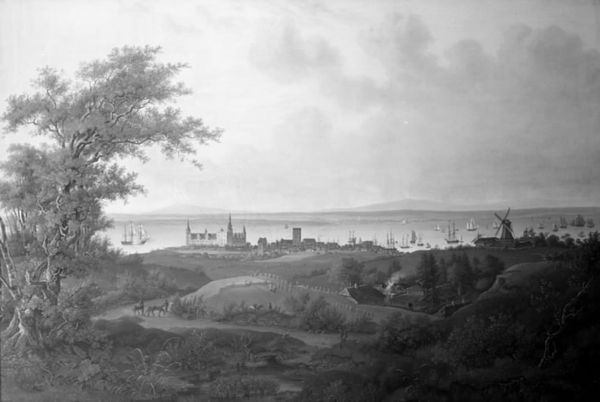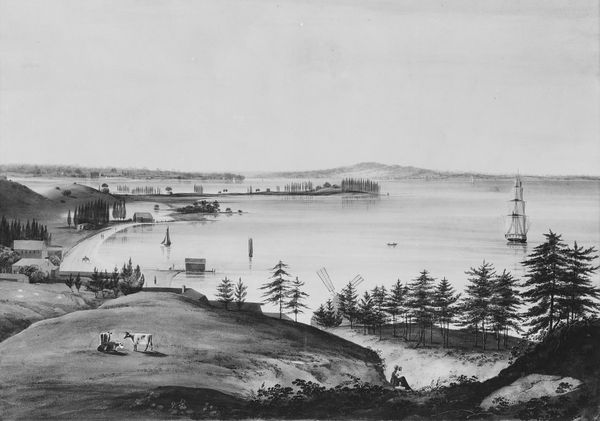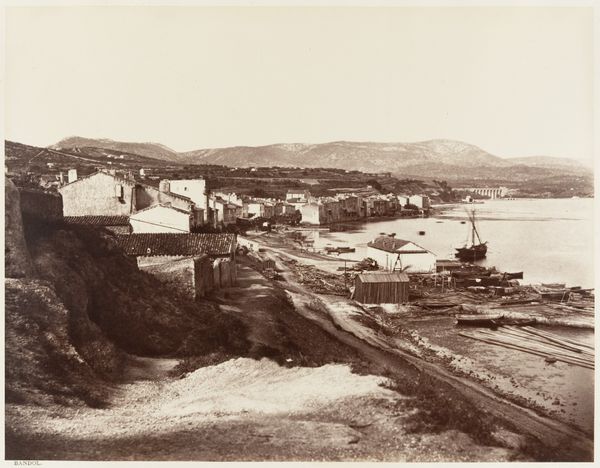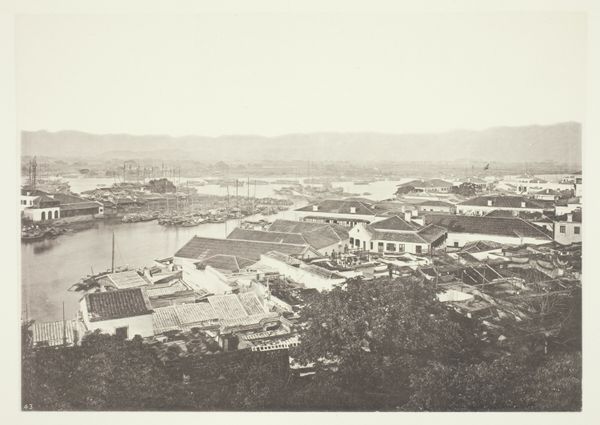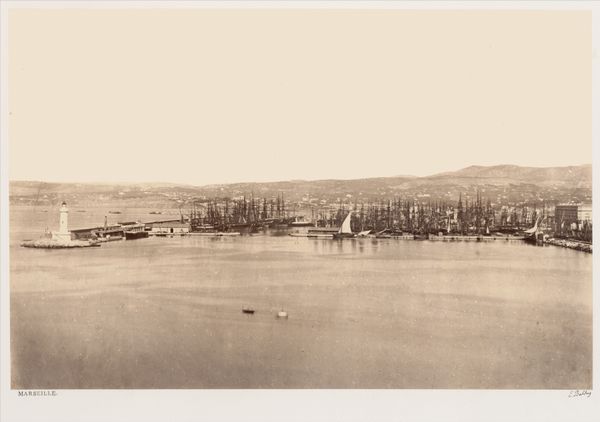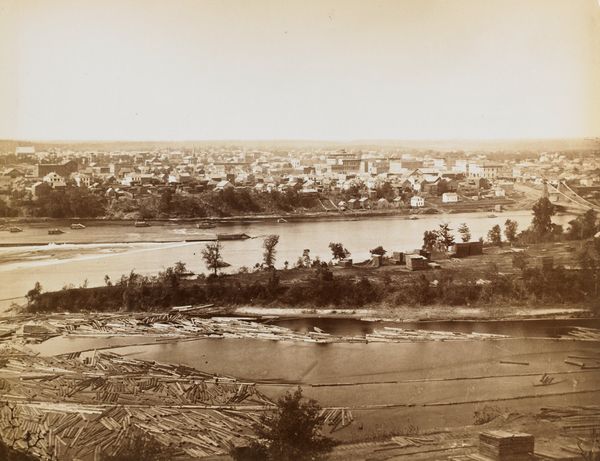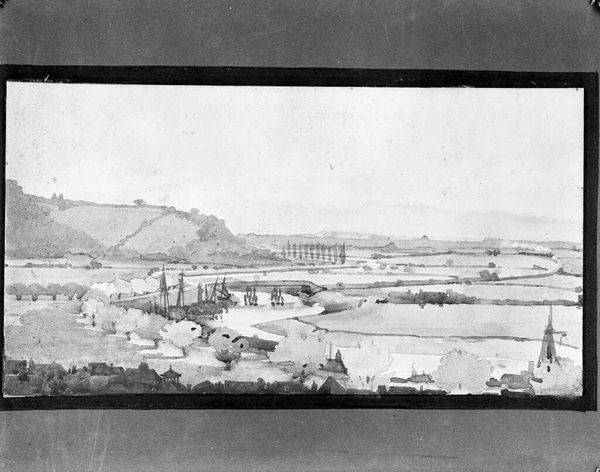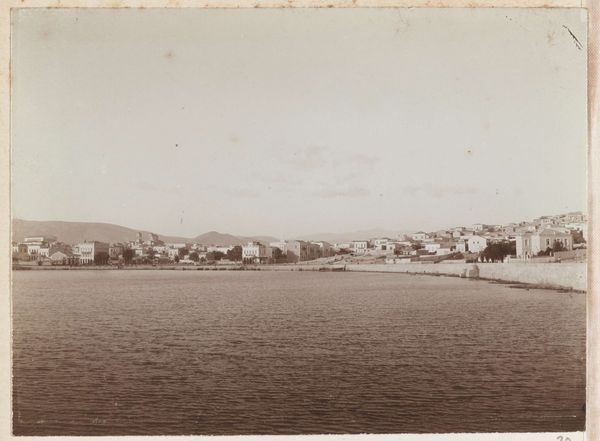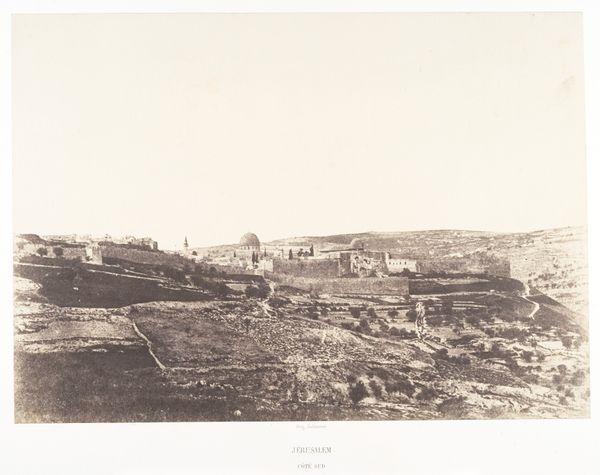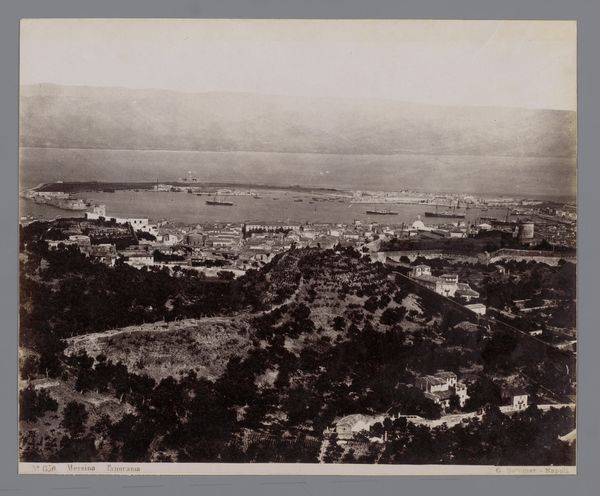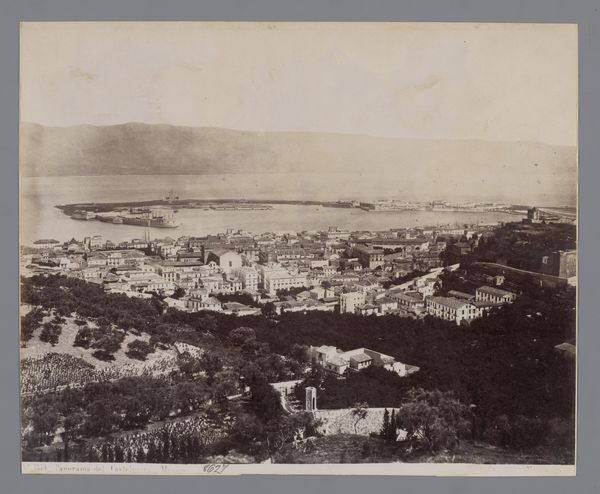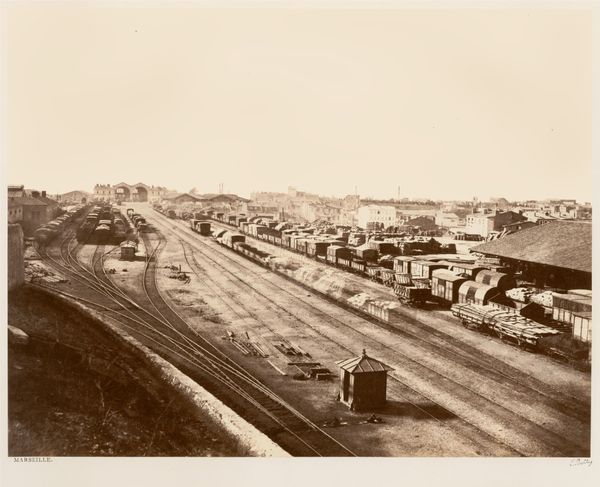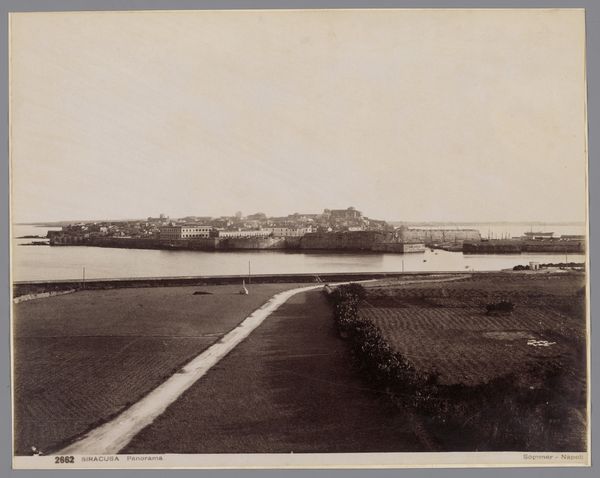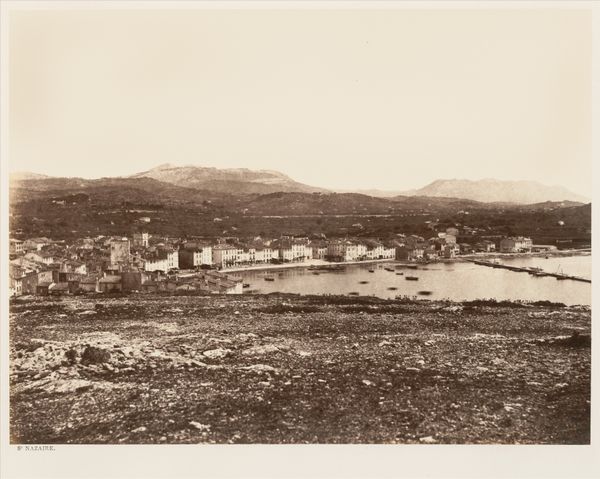
painting, plein-air
#
painting
#
countryside
#
plein-air
#
landscape
#
outdoor scenery
#
romanticism
#
black and white
#
monochrome photography
#
cityscape
#
monochrome
#
monochrome
Dimensions: 85 cm (height) x 124 cm (width) (Netto)
Curator: Gazing at this monochrome painting titled "Et parti fra Svendborg, set fra Ørkel Slotsbanke," by Ferdinand Richardt from 1840, one is immediately struck by its panoramic composition. What are your first impressions? Editor: The prevailing gray evokes a somber atmosphere. It mutes the finer details, but also allows focus on the materiality; the textured canvas and brushstrokes used to create depth. It speaks to the arduous creation in plein-air. Curator: Indeed. The formal structure employs a distinct layering of foreground, middle ground, and distant horizon, directing the eye through a series of visual planes. The interplay of light and shadow provides the underlying formal logic to what might be considered "romantic." Editor: The landscape is interesting from a material perspective. It must have taken a significant amount of work to transport all his equipment, prep the canvas, not to mention time dedicated outside facing variable elements while creating. Did he have assistance? Who processed the materials and how? Curator: Those considerations enrich our understanding of artistic creation in that era. Shifting the focus back, observe the lines – both implied and explicit – converging at various vanishing points within the cityscape. Do you discern some structure? Editor: Certainly, this structured vision, despite its artistic liberties, feels inextricably bound to place, labor and commerce within Svendborg. The human element seems dominated by commercial production reflected by the ships out on the harbor. Curator: It’s clear that Richardt wasn't merely painting scenery, but attempting to create a visual metaphor that incorporated place into the broader human experience. This landscape isn't simply about 'nature', it embodies cultural identity of this coastal locale. Editor: It is interesting how this monochrome palette affects our viewing. It allows us to view this as 'craft' since we view images in color on our phones daily, seeing a piece from 1840 portrayed without it somehow transports it out of the world of fine art and back into that of labor and human touch. Curator: Fascinating insights into material constraints of a finished work which provide perspective when reflecting upon painting practice as it stood at that moment in time. Editor: Ultimately, the landscape opens to questions of artistic intent through what can often be perceived as social practice rather than merely the aesthetic choices made for the end work.
Comments
No comments
Be the first to comment and join the conversation on the ultimate creative platform.
